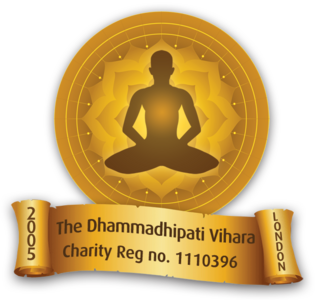Mindfulness Meditation (Satipatthāna)
At this centre we practise mindfulness meditation (Satipatthāna). However before we start practising we must know how to practise. We need to have the right information and the right idea about the nature of the practice so that we have the right attitude when we practise.
We meditate on the Four Foundations of Mindfulness (body, feelings, mind, and dhamma). As the practice develops we give more and more emphasis to the mind because meditation is the work of the mind.
What follows below should be sufficient to get you started. Later on, Dhamma discussions will take you deeper into the practice. Please read and re-read this guidance slowly and carefully.
Mind Work
Meditation is mind work, the work of being aware. It is not the work of the body. It is not what you do with your body, the way you sit, walk, or move. Meditation is experiencing the mind and the body directly, moment to moment, with the right understanding.
When, for example, you put your hands together and pay attention, you will feel and be aware of that sensation – that’s the mind at work. Can you know those touching sensations if you
are thinking of other things? You obviously cannot. You have to be attentive. When you pay attention to your body you will notice many sensations. Can you feel the different qualities of these sensations? Do you need labeling in order to bring your attention and awareness to the different sensations? You certainly do not. In fact, labeling will prevent you from being able to observe details. Simply be aware! However, being aware is only one part of meditation.
In addition, you also need to have the right information and a clear understanding of the practice to work with awareness intelligently. Right now you are reading this book in order to understand mindfulness meditation. This information will work at the back of your mind when you meditate. Reading or discussing Dhamma, and reflecting on how to practice are all mind work, are all part of meditation.
Continuity is vital for this practice, for meditative mind work. You need to remind yourself to be aware all day long. So watch yourself everywhere, all the time; when sitting, walking, cleaning, talking, anything you do – watch it, know it, be aware of what is going on.
Relax
When doing mind work, you should be relaxed and practise without tension, without forcing yourself. The more relaxed you are, the easier it is to develop mindfulness. We do not tell you to ‘focus’, ‘concentrate’, or ‘penetrate’ because it suggests the use of excessive energy. Instead we encourage you to ‘observe’, ‘watch’, ‘be aware’, or ‘pay attention’.
If you are tense or find yourself getting tense, relax. There is no need to make a forceful effort. Right now, are you aware of your posture? Are you aware of your hands touching this book? Can you feel your feet? Notice how little energy or effort you need to know any of this! That is all the energy you need to remain aware, but remember, you need to do this all day long. If you practise this way, your energy will increase over the day. If you use excessive energy, if the mind wastes energy, you will get tired. In order to be able to practise continuously, you just need to keep reminding yourself to be aware. This right effort will allow you to practise in a relaxed way, free of tension. If the mind is too tense or too tired, you cannot learn anything. If the mind and the body are getting tired, something is wrong with the way you are practising. Check your posture; check the way you are meditating. Are you comfortable and alert? Also check your attitude; don’t practise with a mind that wants something or wants something to happen. The result will only be that you tire yourself.
So you must know whether you are feeling tense or relaxed. Check this repeatedly throughout the day. If you feel tense, observe the tension; if you don’t do this, tension will grow (see last paragraph in DAILY ACTIVITIES). Once you feel relaxed, you can meditate more easily.
